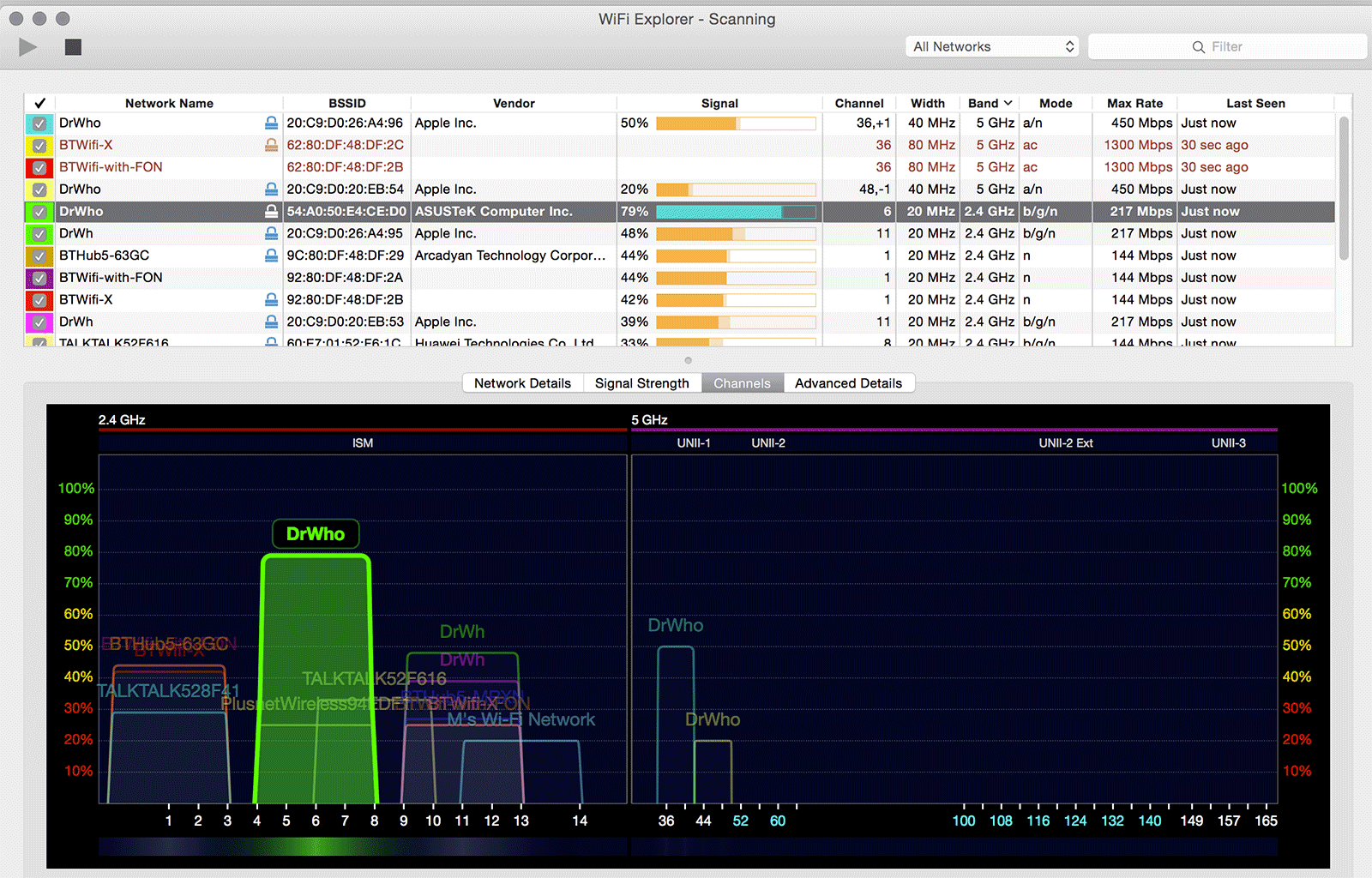
With this information, you can choose a less crowded signal and set your router to a clearer channel. It can also show how many other users currently use the network. If you notice that your network and another network are on the same channel, try switching your router to a different channel.Ĭonsumer wireless scanner tools are free and readily available for download.A WiFi stumbler detects the available channels and signal strength of wireless routers within range. If you have an existing WiFi network and you suspect interference from another network, you can scan the spectrum for activity on each channel. In this case, either channel 1 or 11 would be a better choice. For example, if your network is operating in the 2.4 GHz band, you might notice that another network is already using channel 6. When you set up your wireless access point, you can use a scanner to look at the spectrum in your area. In addition, 5 GHZ is currently used by fewer devices, so there are fewer noise and interference issues. The 5 GHz band offers far more usable channels than 2.4 GHz – approximately 13 usable non-DFS channels (and more, if your wireless access point supports DFS). In addition, since 802.11 was initially only in the 2.4 GHz band, it’s quite crowded today with wireless networks and devices.


In the 2.4 GHz band, there are only three available channels (1, 6, and 11). If you and a neighbor are both using the same network channel for your wireless network, the wireless signals can interfere with one another and slow down your connection.īefore we dive into detecting and resolving channel conflict issues, let’s review the available channels in both the 2.4 GHz and 5 GHz band.


 0 kommentar(er)
0 kommentar(er)
